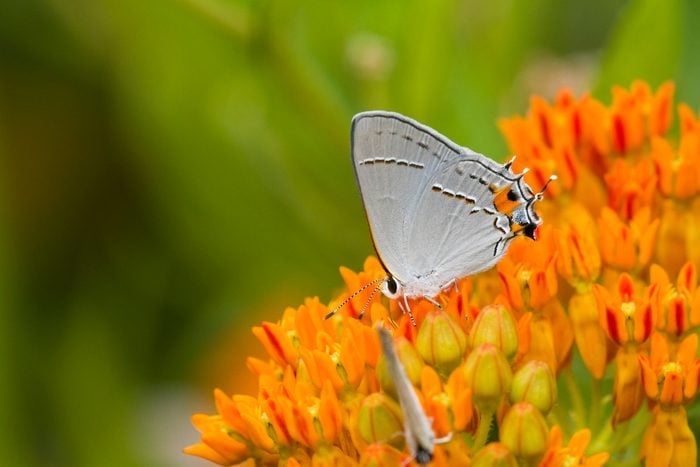
Gray Hairstreak
7/8 to 1 3/8 inches
Host plants include: clover (Trifolium), cotton (Gossypium) and mallow (Malvaceae)
The small butterfly gray hairstreak is the most common member of this family, ranging across the United States and southern Canada. These rapid fliers are slate gray above and soft gray underneath, with an orange spot near each hindwing tail. They also have white, black and orange streaks.
Meet the gorgeous great spangled fritillary butterfly.
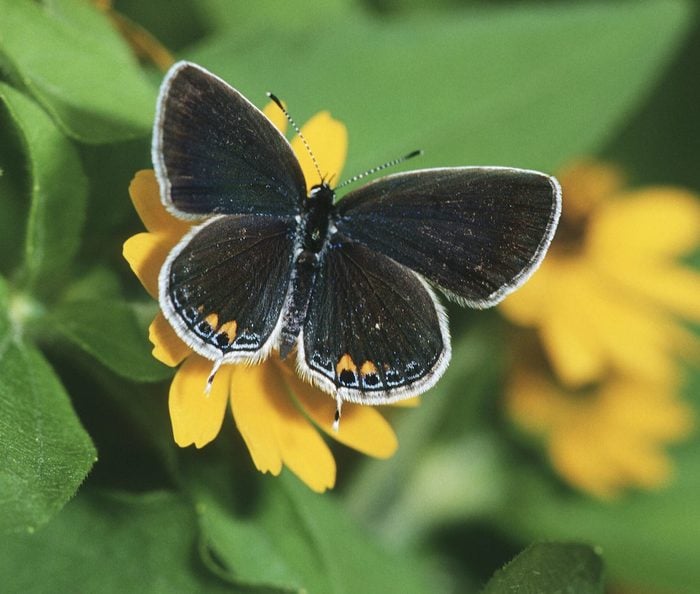
Eastern Tailed-Blue
7/8 to 1 1/8 inches
Host plants include: wild pea (Lathyrus), yellow sweet clover (Melilotus officinalis) and alfalfa (Medicago sativa)
Tailed-blues stand out, with beautiful black-edged azure wings and recognizable wing “tails.” These fliers flutter low to the ground. They feed on smaller flowers because of their short proboscises.
Learn how to identify a red-spotted purple butterfly.
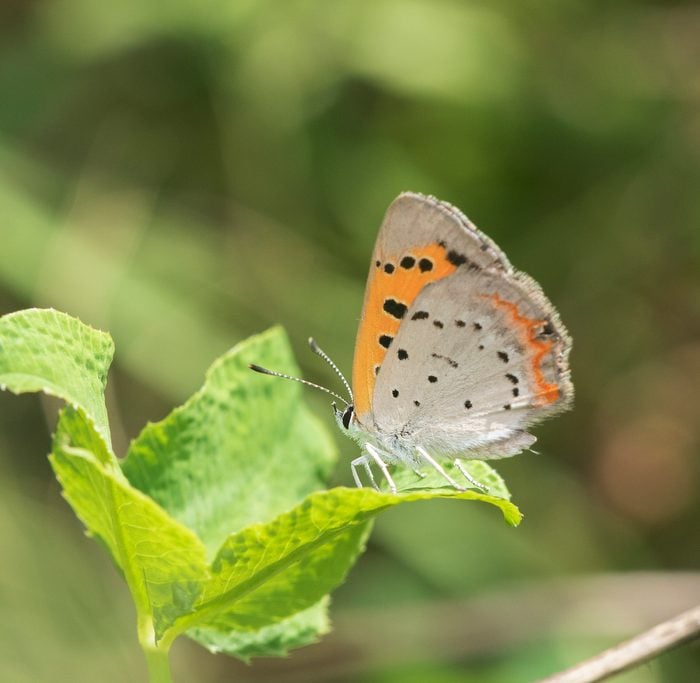
American Copper
7/8 to 1 3/8 inches
Host plants include: sheep sorrel (Rumex acetosella), curled dock (Rumex crispus) and mountain sorrel (Oxyria digyna)
Although they’re not frequent backyard visitors, American coppers are widely distributed across the northern U.S. and southern Canada, often along roadsides or in old fields. The butterflies are a tawny gray above with tigerlike black-spotted orange swathes. They have silvery gray underwings flecked with black.
Discover fascinating monarch butterfly facts.
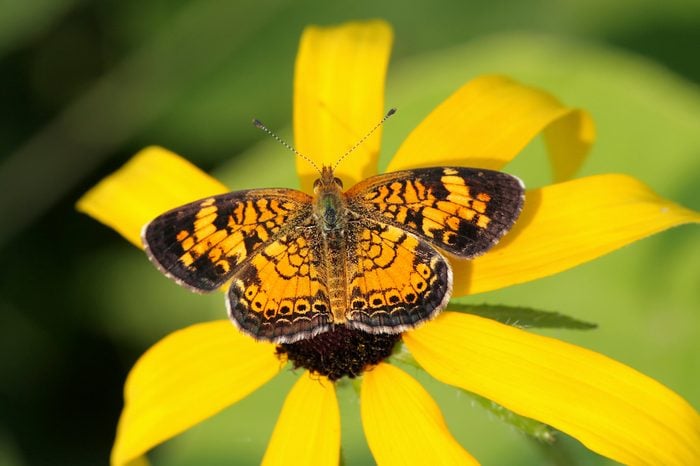
Pearl Crescent
1 1/4 to 1 3/4 inches
Host plants: several species of asters, such as Symphyotrichum pilosum var. pilosum and Symphyotrichum drummondii var. texanum
The pearl crescent is part of the brushfoot family, which includes fritillaries, satyrs and the monarch. Smaller than its cousins, this orange and black-checked butterfly is abundant from the East Coast to the Rocky Mountains. The males patrol open areas looking for females and sometimes dart out at intruders.
Learn what you should do if you ever come across a butterfly with a damaged wing.
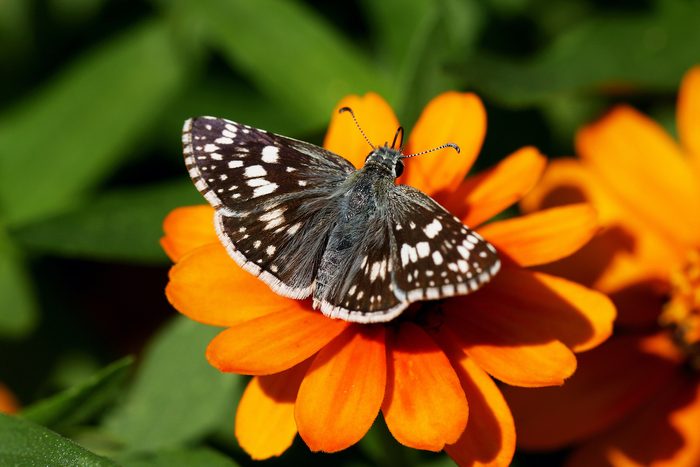
Common Checkered-Skipper
1 to 1½ inches
Host plants include: hollyhock (Alcea) and poppy mallow (Callirhoe)
Skippers are the sparrows of the butterfly world. There are a lot of them and it’s difficult to tell each species apart. The most widespread, the common checkered-skipper, frequents a variety of habitats across much of the U.S. Like other skippers, it has a stout body and is a strong and fast flier.
Learn how to attract black swallowtail butterflies.
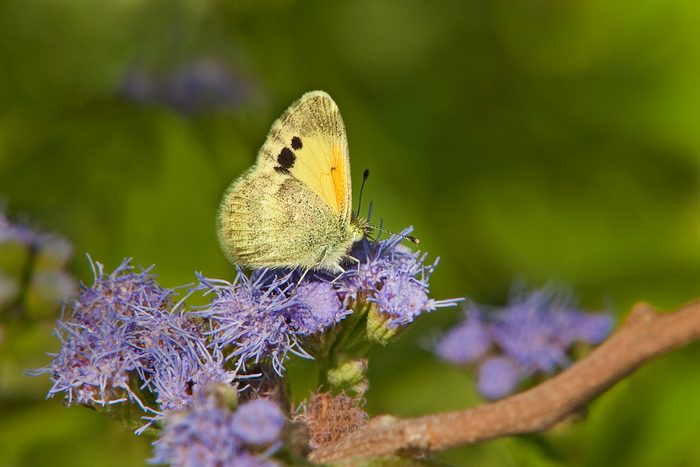
Dainty Sulphur
¾ to 1 1/4 inches
Host plants include: sneezeweed (Helenium), shepherd’s needle (Bidens pilosa) and cultivated marigold (Tagetes)
A list of tiny butterflies wouldn’t be complete without the dainty sulphur, the most diminutive of the North American sulphurs. Even its name means “small.” Found in open areas across most of the southern U.S., it has distinctive sulphur yellow underwings with three black dots.
Look for clouded sulphur butterflies in your backyard.
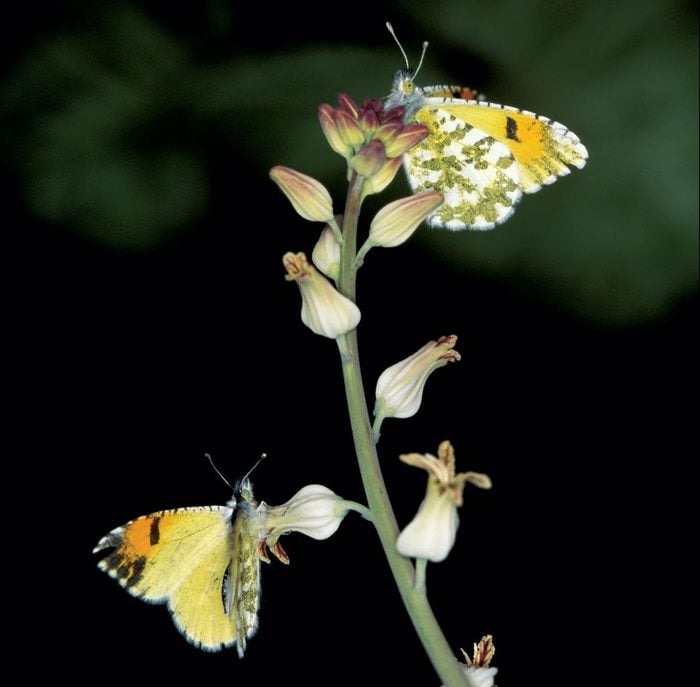
Desert Orangetip
1 to 1½ inches
Host plants include: tansy-mustard (Descurainia pinnata) and tumble mustard (Sisymbrium altissimum)
Named for the orange patches on its forewings, the desert orangetip is common in the rocky southwestern desert. It might visit gardens with plants from the mustard family, its caterpillar host plant. If the weather is too dry for the orangetip to emerge, it may remain in its chrysalis stage for several years.
A painted lady butterfly is a flying work of art.
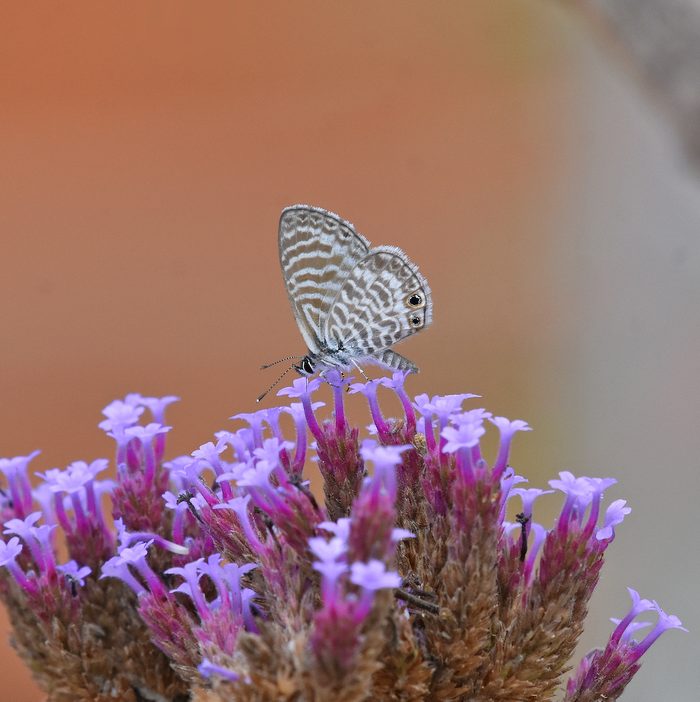
How Much Does a Butterfly Weigh?
Just how much does a butterfly weigh? Butterfly field guide author Paul Opler of Colorado State University estimates a large swallowtail weighs 0.3 gram, and smaller butterflies weigh 0.04 gram. The smallest, a pygmy-blue, would weigh only thousandths of a gram.
For comparison, a single sugar cube weighs about 3 grams.
Next, learn about comma and question mark butterflies.
